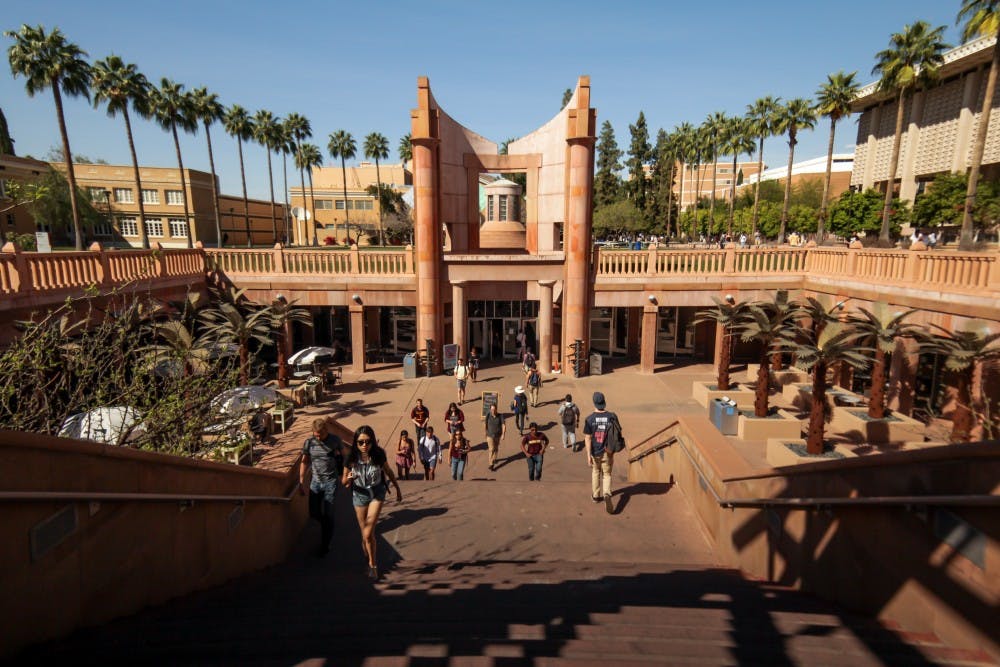Subject Librarians for the arts at ASU Libraries emphasize the importance of immersing in research within the arts.
As a resource to personally assist with research projects, their tasks are to help faculty and students with citation methods, in-depth research on the subject, create library guides to provide relevant information on the student’s topic and “boost research skills and knowledge” through making online tutorials.
As provided for every college, there are Subject Librarians who focus on the arts, including art, dance, film and theater, a selection that may not often be recognized.
Head of the Design Library and subject liaison for studio arts Debra Riley-Huff said that whether it is in music, theater or art, it is a process of creativity and originality.
“The creative arts really are the spark for anything in the future,” Riley-Huff said. “To be able to think creatively is the beginning of everything that’s new.”
Riley-Huff said immersing oneself in the arts research process allows for a constant renewal in the creative process instead of being stuck in the consistent reinforcement of the same information. Conducting deeper research, she said, can allow people to see something they had never seen or known about before, as they develop original thinking and creativity.
“The same kind of creativity that goes into creating a new solution is the same creativity that goes into art and sculpture,” Riley-Huff said. “It’s just how it gets used in different ways.”
Riley-Huff said some arts students are not aware of the resources available to them in the library until late into their college career, something she hopes to improve. She said using them from the start could help enrich one’s experience with knowledge as it empowers them through learning beyond the classroom.
“The creative process is integral to life itself,” Riley-Huff said. “You really can’t separate creativity and design from anything that’s ultimately going to be successful.”
One of three librarians at the West campus library, director and humanities and the arts subject librarian Dennis Isbell said he works with a wide range of musicians, visual artists, or subjects like religion, literature and history.
When working with arts faculty, Isbell said there is a focus on collection and experience through going out and talking to people, or discussing other artists’ work.
“There’s a lot of effort that goes into it (research),” Isbell said. “Many times, a lot of the preparation that goes into creating a piece of art that is not traditional library-based research could be a lot of reflection, a lot of discussion, it could be just visits and browsing. They inform themselves in different ways.”
Isbell said he has always had an interest in the arts and humanities. He continually aims to be aware of what faculty are doing and what students are doing through their coursework, hoping to provide sources for deeper thinking.
“It’s a way of viewing and thinking about the world in a way that you may not originally,” Isbell said of the arts and its research processes. “Part of why we’re here is to open up these different resources to students and faculty, to help them deepen their understandings and their reactions, their experience of the world in various different ways.”
Patricia Clark, an associate professor for interdisciplinary arts and performance at the West campus has also utilized the resources of the arts subject librarians.
Clark’s work with video art installation, interactive installation, photography and printmaking puts a focus on Latin America, more in-depth into Cuba.
Emphasizing that an artist is just like anyone else, Clark said it’s always important to fact-check.
“Artists have to do a lot of research in order to be able to do what we do, it just doesn’t come off the top of our heads,” Clark said. “Having the resources of a library that are already geared toward the arts, humanities and cultures, having a librarian available who knew his stuff and kept his eye out for particular things, that meant the world for me.”
Although Clark has studied other cultures outside of her own, she said doing the research for her multimedia art pieces was essential when entering a new culture in Cuba, a culture she has been visiting and presenting in her work for 19 years and counting.
Clark said it is important to be accurate and correct, avoiding mistakes when creating installations about a different culture.
“Any person who is engaging in creative activity must do research,” Clark said. “How it is conceived, how it is created and how it is presented, you have to research out all of the materials, who did this before, ‘what am I trying to say to my audience.’”
“With any idea that the artist has, we still have to do research. There’s no way around it.”
Reach the reporter at tespana@asu.edu and follow @thaliamespana on Twitter.
Like The State Press on Facebook and follow @statepress on Twitter.





